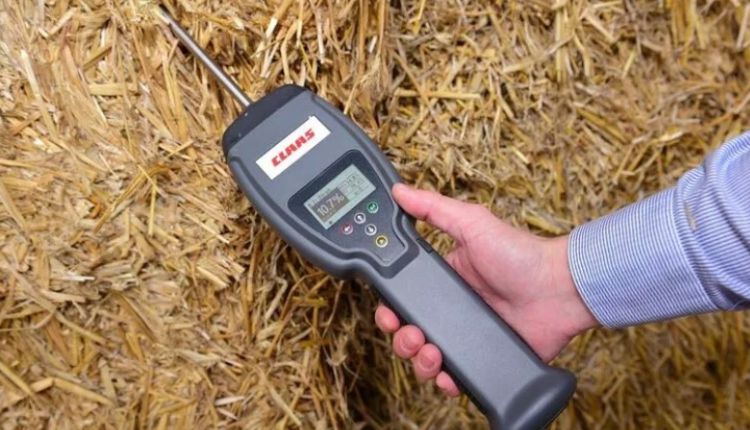There are many ways to calibrate hay moisture testers, but these are some of the easiest and most effective. Besides that if you want to buy a good quality hay moisture tester you can also visit the site of Lumbuy.
- Use the correct calibration standard
There are rules about how dry and how wet hay should be. Make sure your tester is based on the right standard. When it comes to hay, you need to think about two different types of moisture: dry hay and wet hay. And, depending on what kind of hay you’re testing, you’ll need to use a different standard to calibrate your hay moisture tester.
Wet hay can be anywhere from 30 to 40 percent water, while dry hay is usually between 15 and 18 percent water. So, when testing the amount of moisture in your hay, it’s important to make sure you’re using the right standard.
If you are using a dry hay moisture tester, you will need to set it up to the standard for dry hay. And if you use a wet hay moisture tester, you’ll need to set it up to the standard for wet hay.
It’s important to remember that you can’t use a moisture tester for dry hay on wet hay or wet hay on dry hay. So, if you don’t know what kind of hay you’re testing, it’s best to be safe and use the wet hay moisture tester.
No matter what kind of hay you’re testing, it’s important to calibrate your hay moisture tester with the right standard. So, you can be sure that the results you get are correct.
- Follow the manufacturer’s instructions
When it comes to setting up your hay moisture tester, each one is different, and you should follow the instructions from the manufacturer. Depending on the type of tester you have, the calibration process may be a little different. But in general, you should calibrate the tester before each use to make sure it is right.
A hay moisture tester can be set up in a few different ways. Most people use a “calibration kit” to do this. This kit usually comes with a set of weights for calibration and a standard for calibration. The calibration weights are used to change how sensitive the tester is, while the calibration standard is used to make sure the readings are correct.
Using an external standard is another way to calibrate. When the calibration kit isn’t around, this method is often used. A piece of dry hay or a glass of water are both examples of external standards. The key is to find something that has the same amount of moisture as the hay you will be testing.
Once you have your calibration kit or external standard, the next step is to use it according to the instructions given by the manufacturer. Most hay moisture testers come with a chart that shows how to set them up. This chart shows you how to calibrate your tester correctly.
A key part of making sure your hay moisture tester is accurate is to calibrate it. By calibrating your tester before each use, you can be sure that the readings you get are correct.
- Check the environment.
When calibrating a hay moisture tester, it’s important to make sure the setting is right for getting accurate readings. The readings can be changed by both the temperature and the humidity.
Temperature should be between 68 and 77 degrees Fahrenheit, and humidity should be between 40 and 60 percent for best results. If the temperature or humidity is outside of this range, it could make the readings less accurate.
Also, make sure the hay moisture tester is calibrated correctly. If it isn’t, then the readings will be wrong. To calibrate the tester, read the manual and do what it says.
If you follow these tips, your hay moisture tester will give you correct readings.
- Check the tester
Since it’s summer, it’s time to calibrate your hay moisture tester so you can make sure your hay has the right amount of moisture. Here’s a quick rundown of what to do: First, make sure your tester is on and that all of its connections are tight. Next, make sure the batteries are still good. After that, you’ll need to calibrate the tester.
To do this, you will need a piece of hay that is as close as possible to the moisture level you want to test. Cut or tear off a small piece of the hay and put it in the tester. Then, calibrate the tester by following the directions on it.
Once the tester has been set up, you can start checking the hay. Just put a small piece of hay in the tester and wait for it to tell you what it thinks. Write down the reading so that you can keep track of how wet your hay is over time.
By doing these easy things, you can make sure that your hay moisture tester is working well and giving you accurate readings. This will help you keep the right amount of moisture in your hay, which is important if you want your animals to stay healthy and happy.
Conclusion
It is important to calibrate your hay moisture tester to get accurate readings. By using these key tips, you can make sure that your tester is set up right. However, if you want to know more about this matter you can visit the official website of Lumbuy.

